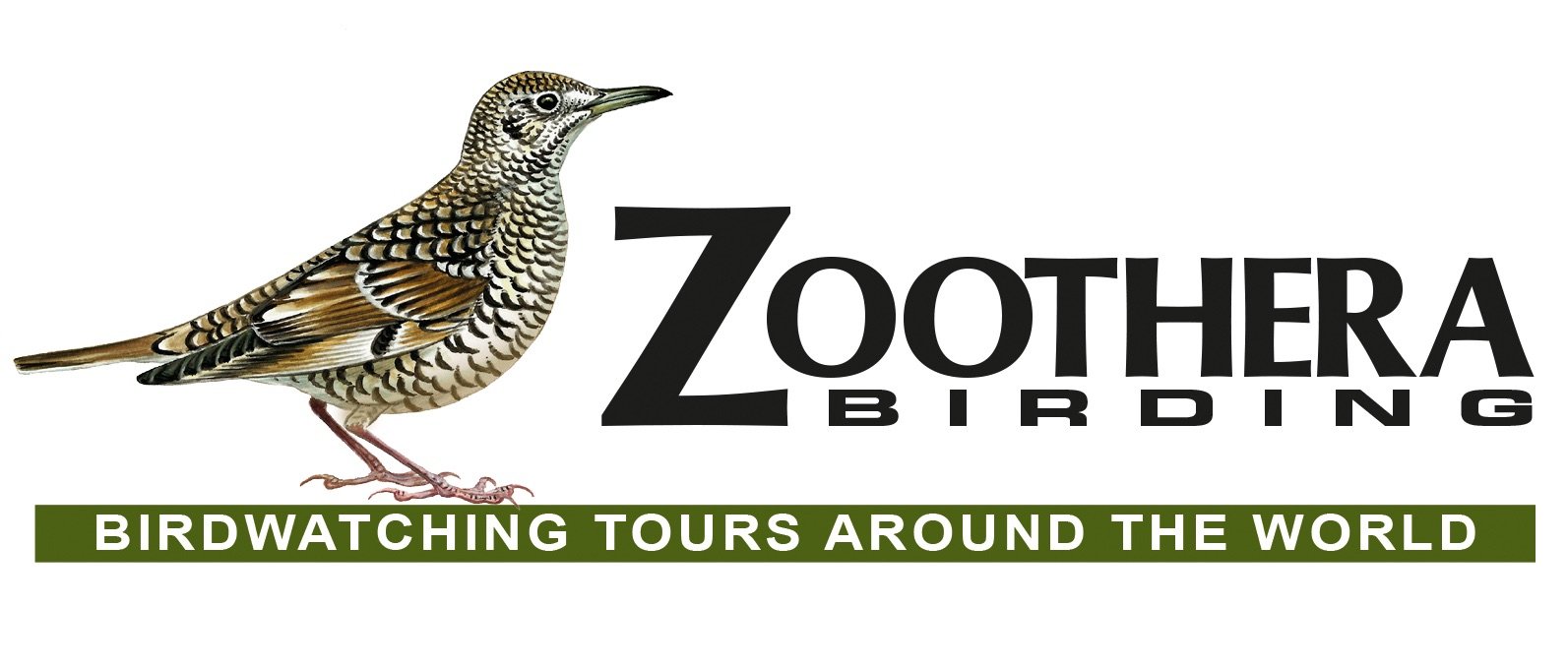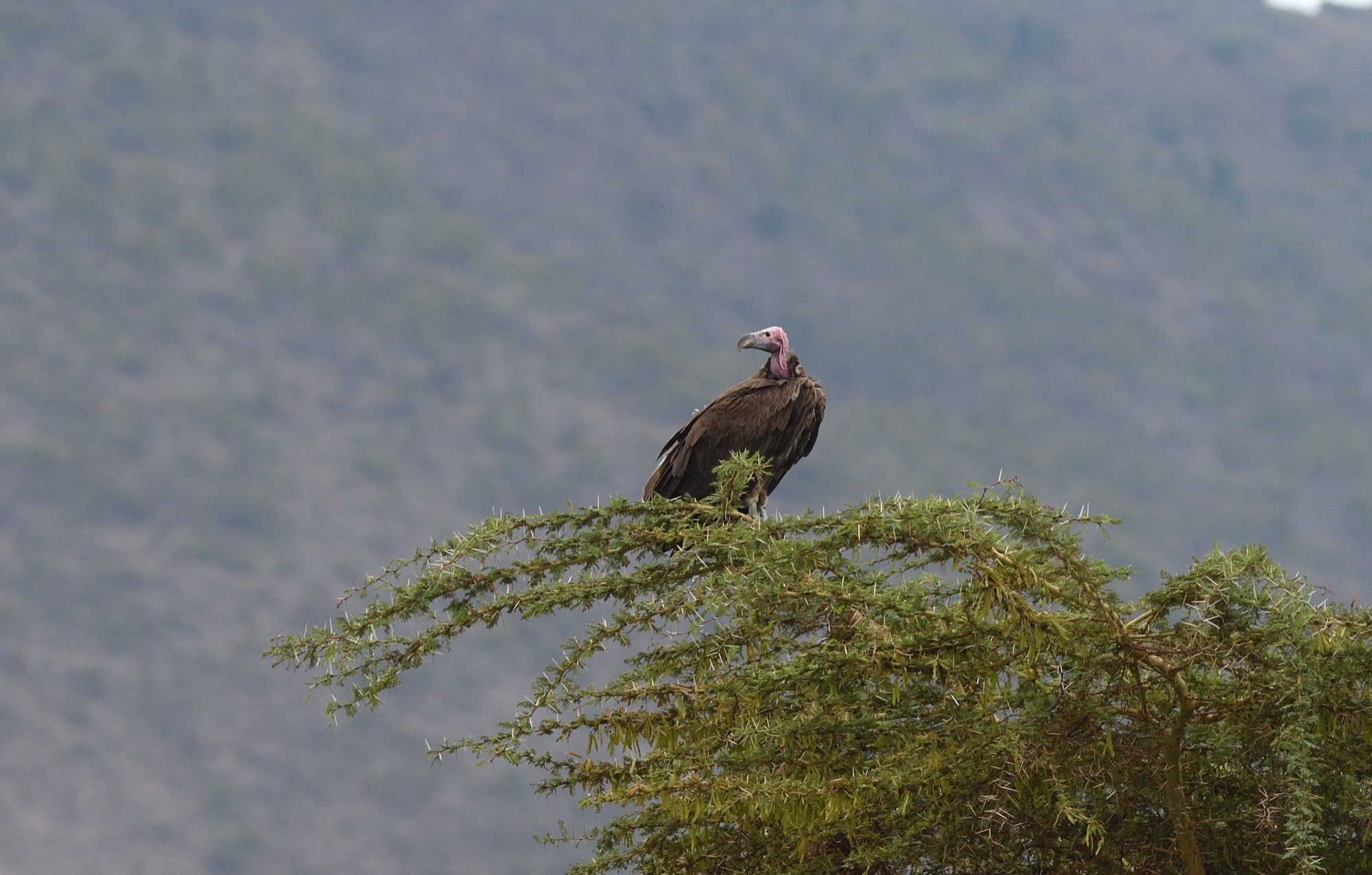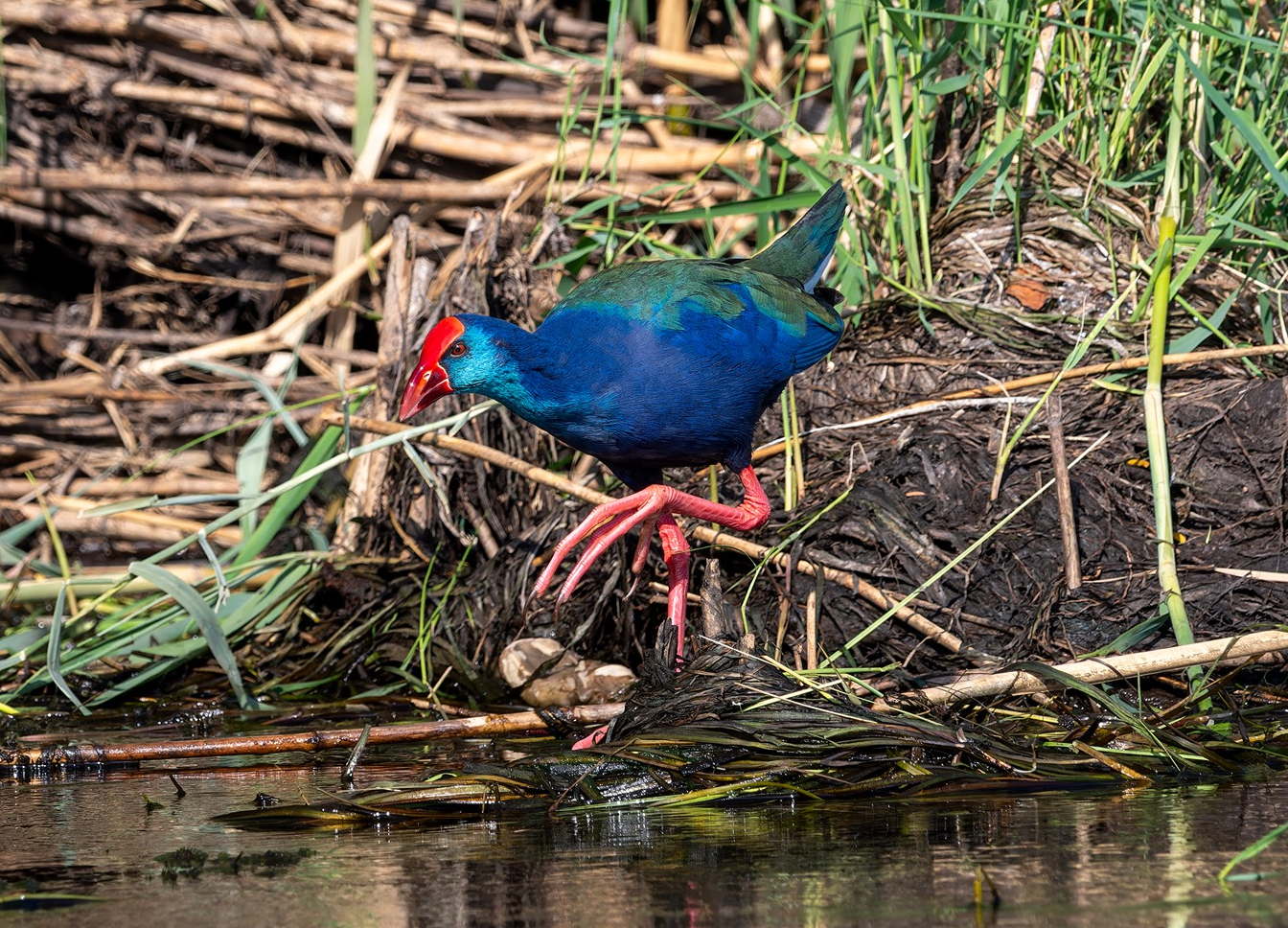EGYPT 2026 -
Western Palearctic Specialities Tour!
DAY 1 ARRIVAL IN CAIRO - 22nd September
This is purely an arrival day into Cairo International Airport, and no birding or cultural excursions are planned. If you wish to visit some of the cultural sites around Cairo, we suggest arriving a couple of days earlier as there as so many sites to visit. Night in Cairo.
DAY 2 CAIRO
This morning we will visit a couple of sites primarily in search of Kittlitz's Plover and Senegal Coucal and possibly Streaked Weaver if any have been reported recently. But there's a fine supporting cast of other Western Palearctic megas present around Cairo that can also be found further south as well along the Nile such as African Swamphen (recently lumped in Purple Swamphen - but for how long?), Greater Painted Snipe, Senegal Thick-knee, African Green Bee-eater, White-throated Kingfisher, Streaked Scrub Warbler, Nile Valley Sunbird, Red Avadavat and Indian Silverbill. Other commoner species we will probably see today include Laughing Dove, Eurasian Hoopoe, Pallid Swift, Blue-cheeked Bee-eater, and possibly a few northbound migrants as well that could even include White-tailed Lapwing. We will also visit Egypt’s most famous tourist attraction, the Great Pyramids of Giza and the incredible Sphinx, because you simply have to when in Cairo! Night in Cairo.
DAY 3 CAIRO - FAIYOUM
It's going to be an early start as we need to head south some 210kms in order to search for Chestnut-bellied Sandgrouse, and this is the only known and accessible site in the entire Western Palearctic where you have any sort of chance of seeing this species. So hopefully it will be worth the effort! There are also some really good desert species present including Cream-coloured Courser, Greater Hoopoe-Lark, White-crowned, Mourning and Hooded Wheatears, and both Desert & Bar-tailed Larks. Night in Faiyoum.
DAY 4 FAIYOUM - CAIRO
We have the morning to search for the sandgrouse again, as well as any other species we still need before returning to Cairo and flying to Hurghada in the evening. Upon arrival we will transfer a short distance to a nearby hotel. Night in Hurghada.
DAY 5 HURGHADA - MARSA ALAM
We have the morning around Hurghada to check out a few good birding sites, including the local sewage pools before driving south along the coast road that runs parallel to the Red Sea, making a series of stops along the way. Night at a lovely resort close to the coast.
DAYS 6 - 7 RED SEA COAST - HAMATA ISLANDS
We have two full days to thoroughly explore the coastline where amongst the mangroves we can check for Yellow Bittern and Goliath Heron. They used to occur here and if there's any chance of these two species anywhere in the Western Palearctic, it's here! So fingers crossed! Much more likely but a true Western Palearctic mega species is Crab-Plover and we should find a few around the Hamata Mangroves or other sites along the coast. We will be covering a lot of coastline and should pick up White-eyed and Sooty Gulls at some stage of our time here. A major highlight of the tour is a boat trip out to the Hamata Islands has breeding Sooty Falcons, along with White-cheeked, Bridled & Great Crested Terns and we should also find Brown Booby here as well. A drive further south to Shalateen could also give us Lappet-faced Vulture as well and we will keep an eye out for any African Collared Doves that may still be present, although it does seem that this species is now very rare in Egypt. Nights at a resort.
DAY 8 MARSA ALAM - ASWAN
We have the morning hase any species we still need before setting out on the 5 hour drive west to Aswan. Night in Aswan.
DAYS 9 - 10 ASWAN
Aswan, situated on the banks of the Nile offers some fantastic birding opportunities. The major target here is Three-banded Plover, and one or two pairs breed most years in this area. Egypt is the only country in the entire Western Palearctic where you can reliably hope to see this species! We will also take a boat ride along the Nile where we have further opportunities to find Purple (African) Swamphen, Senegal Thick-knee, African Green Bee-eater, Clamorous Reed Warbler, Nile Valley Sunbird, Red Avadavat, Indian Silverbill. The boat ride along the tranquil Nile waters in the late afternoon will provide a fantastic experience and we could add many species to our list here including Ferruginous Duck, Garganey, Purple Heron, Little Heron, Little Bittern, Black-winged Kite, Yellow-billed Kite, Long-legged Buzzard, White-winged, Black & Whiskered Terns, Barbary Falcon, Graceful Prinia, Clamorous Reed Warbler, Nile Crocodile and many others. We should also be able to find one or two Trumpeter Finches in the surrounding desert environments. Nights in Aswan.
DAYS 11 - 13 ASWAN - ABU SIMBEL
Depending on which species are still needed we might not leave Aswan until after lunch before driving 3 hours south to Abu Simbel. This really is one of the Western Palearctic outposts as we will find ourselves not too far from the border with the Sudan and there's always the possibility of something truly rare. However, we will be looking for several species that just make it into the Western Palearctic around Abu Simbel and can be classed as some of the rarest birds in the region, such as Yellow-billed Stork, Reed Cormorant, Pink-backed Pelican, Plain (Brown-throated) Martin, African Pied Wagtail, and both Streaked & Village Weavers. We also have further chances of Kittlitz's Plover here as well, and an outside chance of Crimson-rumped Waxbill which occasionally turn up here. We will undoubtedly have to take a boat out onto Lake Nasser to find one or two of these key species and it's an excellent way to explore this area. We can only hope for an African Skimmer or Pink-backed Pelican to put in an appearance but alas, this species is extremely rare these days. And let's not forget it is migration time so we could well find something unusual in this area.
Potential other species are many and varied and hopefully we can witness some good migration and find the bushes and trees alive with passerines! Possibilities include Egyptian Goose, Eurasian Spoonbill, Black-crowned Night-Heron, Glossy Ibis, Osprey, White-throated & Pied Kingfishers, Spur-winged Lapwing, Little Stint, Curlew Sandpiper, Slender-billed Gull, Whiskered, White-winged & Gull-billed Terns, Laughing Dove, European Turtle Dove, Eurasian Hoopoe, Eurasian Golden Oriole, European & Blue-cheeked Bee-eaters, Bee-eater, Pale Crag Martin, Eurasian Wryneck, Woodchat & Masked Shrikes, White-crowned Wheatear, Rufous-tailed Scrub-Robin, Semicollared Flycatcher, Graceful Prinia, Great Reed & Clamorous Warbles, Marsh, Eastern Olivaceous & Eastern Bonelli's Warblers, Brown-necked Raven, Red-throated Pipit, Western Yellow Wagtail of several different races and more. If we are lucky, then an evening excursion could give us a Pharaoh Eagle Owl or Egyptian Nightjar.
We can also visit the spectacular Abu Simbel Temples, which were built in honour of Ramses II and his beautiful wife Nefertari. The sound and light show shortly after sunset is awesome! Nights in Abu Simbel.
DAY 14 ABU SIMBEL - CAIRO - END OF TOUR - 5th October
Following a final morning's birding we will take an afternoon flight back to Cairo in order to meet our evening flight back to the UK or other European cities and the end of the tour.












